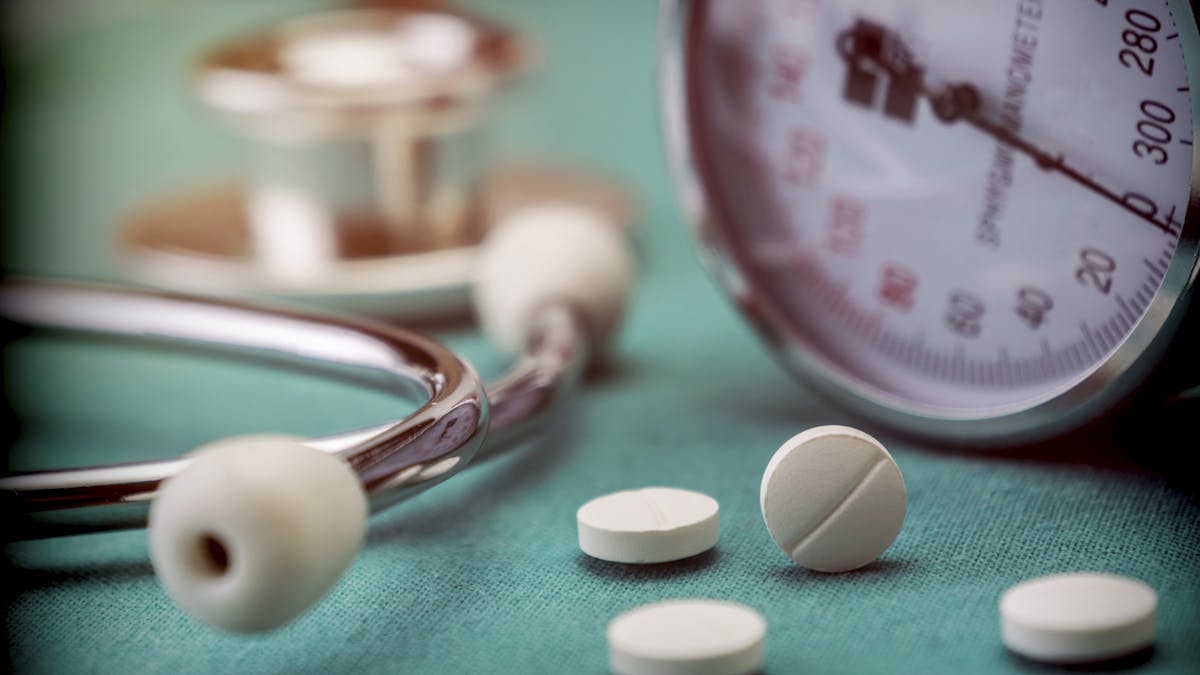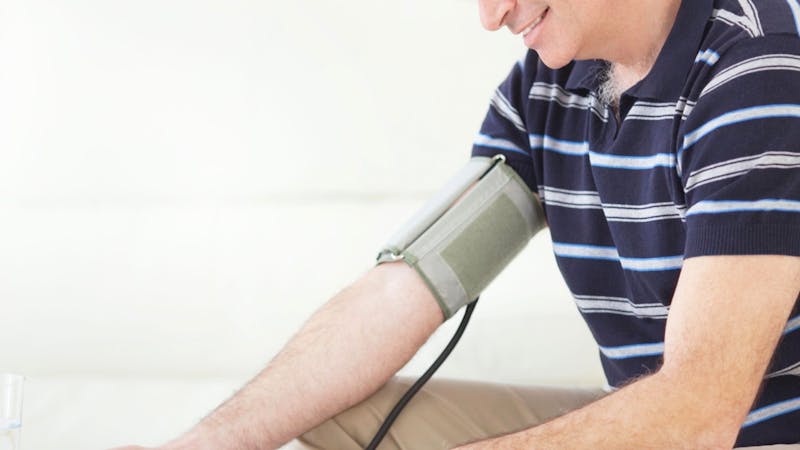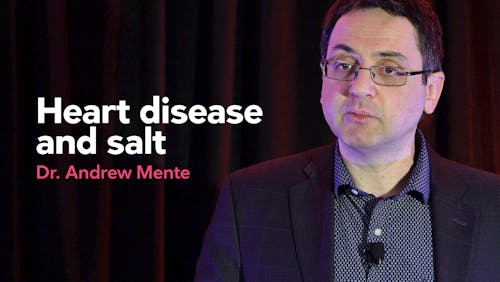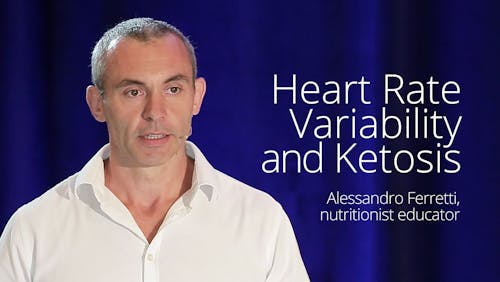Blood pressure drugs: the 8 major classes of medications
In this case, you may be prescribed anti-hypertensives, which are blood pressure drugs that come in eight major classes, with many formulations.
Each class of drug has a different action in the body for reducing blood pressure. Selecting the right drug, or combination of drugs, is a careful process that depends on your medical history. It may take some time for you and your doctor to work out the best medication regimen for you.
This guide will tell you everything you need to know about the major blood pressure drug classifications, how they lower blood pressure, who they are best suited for, and any potential side effects.
First, why is lowering high blood pressure so important?
Other Diet Doctor guides have discussed what you need to know about normal blood pressure, low blood pressure, and high blood pressure.
Normal blood pressure is anything below 120/80. The potential risk of health problems increases steadily for every point above that normal range. Blood pressure that is consistently higher than 130/80 is considered stage 1 hypertension as it can slowly increase your risk of many medical conditions such as heart disease, heart attacks, stroke, kidney damage, eye damage, and even early death. Getting your blood pressure into the normal range is very important.
While a low-carb diet, exercise, and losing weight can bring high blood pressure back into normal ranges, it is not always enough. If your blood pressure still remains high, you should work with your doctor to see if anti-hypertensive medications are right for you.
Information your doctor needs to know
The best choice of medication will be based on factors such as your age, lab tests, medical conditions, and whether a specific cause for your hypertension is found.1
Before putting you on a specific drug, your doctor will likely perform the following:
- at least two blood pressure measurements on two separate occasions.
- a complete medical history, especially noting any risk factors for cardiovascular disease, as well as any prior heart attack, stroke, angina; or any history of health conditions that cause high blood pressure such as thyroid issues and sleep apnea.
- an assessment of whether you take any supplements, over-the-counter drugs or prescription medications that may contribute to high blood pressure
- a physical exam
- standard lab tests (blood sugar, complete blood count, lipid panel, thyroid, basic metabolic panel ) and a urine test looking for kidney damage
- an electrocardiogram (ECG) may be ordered to assess your heart’s electrical activity
Although it is rare, if your blood pressure is very high at your medical visit (for example higher than 180/120) and/or you are at risk of suffering damage to your organs, you may need to be admitted immediately to the hospital for blood pressure reducing IV medications.2
Common classes of blood pressure medications
Blood pressure medications fall into eight basic classes:
- diuretics
- angiotensin-converting enzyme inhibitors (ACE inhibitors, or ACE-I)
- angiotensin II receptor blockers (ARBs)
- calcium channel blockers (CCBs)
- beta-blockers (BBs)
- alpha-1 blockers
- central agents and alpha-2 agonists
- direct vasodilators
Clinical guidelines recommend doctors start your treatment with one of the first four classes listed above, often referred to as “first line” anti-hypertensive medication.3
How does each class work?
41. Diuretics
Used for more than 50 years, diuretics are one of the oldest classes of blood pressure medications. Sometimes called “water pills,” they reduce blood pressure by removing extra salt (sodium) and water from the body through the kidneys. This reduces the amount of fluid flowing through your blood vessels, thereby reducing your blood pressure.
Along with lowering blood pressure, diuretics also reduce swelling and bloating. While some people taking diuretics may have to urinate more often, not everyone experiences this and most adjust to this side effect over time.
There are three different sub-classes of diuretics and each one works on different parts of the kidney to flush out water and salt:
- Thiazide or thiazide-like: Considered the first choice of therapy if you have normal kidney and heart function, common thiazide diuretics include: chlorthalidone, hydrochlorothiazide, and indapamide. While considered safe, they can lower the amount of potassium in your body. Also, a small percentage of people may develop gout or have increased blood sugar levels on thiazides. Therefore, if you have a history of gout, pre-diabetes or an existing diabetes diagnosis, your doctor may choose to start you on a different class of blood pressure drug. You may also need close monitoring of your electrolytes while taking these medications.
- Loop diuretics: Used more often if you have pre-existing reduced kidney function, swelling in your limbs (edema) or heart failure, common loop diuretics include: furosemide, bumetanide, and torsemide. Like thiazides, loop diuretics are generally safe, but some people may develop electrolyte disturbances, such as low calcium, magnesium, sodium, and potassium.
- Aldosterone antagonists: Also called “potassium-sparing” diuretics, these drugs may increase potassium in the body. Most commonly prescribed to people with combined heart failure and high blood pressure, common aldosterone antagonists include spironolactone and eplerenone. In a small percentage of people, spironolactone may cause gynecomastia (swelling of the breast tissue in males) and erectile dysfunction.
Your sodium, potassium, uric acid, calcium, and renal function are usually monitored regularly while taking any of the diuretics. If your diuretic is causing you to lose too much potassium your doctor may recommend potassium supplements or that you eat specific foods high in potassium.
Anecdotally, people on a keto diet may find themselves more sensitive to diuretics as being in ketosis can also have a slight diuretic effect.5
2. Angiotensin-converting enzyme inhibitors (ACE inhibitors)
ACE inhibitors are another common first choice among blood pressure medications because they typically work well and have relatively few side effects. Common ACE inhibitors include: benazepril, captopril, lisinopril, and enalapril. You can usually identify an ACE inhibitor by a drug name that ends in “-il”.
ACE inhibitors work by blocking an enzyme in the body that makes a substance called angiotensin II. Angiotensin II triggers the arteries to squeeze down or narrow, which causes an increase in blood pressure. By reducing how much angiotensin II is produced by the body, ACE inhibitors help blood vessels widen and relax, thereby lowering blood pressure.
This class of medication is commonly prescribed for people with type 1 or type 2 diabetes, heart failure, or chronic kidney disease and is generally very well tolerated.
If side effects occur, they are typically elevated potassium levels or a cough. These may be significant enough to require switching to another blood pressure medication.
A rare allergic reaction called angioedema (a swelling of lips and airway making it difficult to breath) can develop in people taking ACE inhibitors. This reaction is more common among African Americans, women, and smokers — and requires stopping the medication and seeking immediate medical attention.
It’s important to note that women who are pregnant (or may become pregnant) should avoid using ACE inhibitors, since these drugs can be dangerous to the health of the mother and the development of the fetus.
Initially, some reports speculated that taking ACE inhibitors could contribute to more severe symptoms of the coronavirus. Both the American Heart Association and the Council on Hypertension of the European Society of Cardiology released statements highlighting the lack of any clear evidence supporting a harmful effect of ACE inhibitors in the context of the COVID-19 pandemic.
Since that time, one study reported no worsening of COVID disease severity from taking ACE inhibitors or ARBs.6 Current medical advice strongly recommends that patients continue treatment with their usual anti-hypertensive therapy unless otherwise advised by their doctor.
3. Angiotensin II receptor blockers (ARBs)
Similar to ACE inhibitors, ARBs stop angiotensin II from causing blood vessels to narrow. Instead of blocking the formation of angiotensin II, however, these drugs block the angiotensin II receptor on blood vessels, preventing a constriction or narrowing of the blood vessel.
Common ARBs include losartan, valsartan, and candesartan. You can usually identify an ARB by a drug name ending in “-tan.”
This class of medication is also considered a potential first-line therapy choice for those with high blood pressure. Some patients, especially people with kidney disease or those taking potassium supplements, may develop elevated potassium levels, so potassium levels and kidney function will need to be monitored.
Similar to ACE inhibitors but less common, ARB side effects may include high potassium levels or a dry cough. Also very rare is the allergic reaction angioedema, which requires immediate medical treatment. Women who are pregnant or may become pregnant should also avoid using these drugs, just as they need to with the ACE-I drugs.
As noted above with ACE inhibitors, you should not discontinue ARBs because of concern over interactions with the coronavirus without discussing it with your physician.
4. Calcium channel blockers (CCBs)
CCBs stop calcium from entering the muscle cells, resulting in less narrowing of the arteries and a reduction in the force and rate of the heart’s contractions. All of this results in lower blood pressure. In general, CCBs are also considered a first-line choice.
The two major sub-classes of CCBs are dihydropyridines (DHPs) and nondihydropyridines (non-DHPs). Dihydropyridines act more on the arteries and nondihydropyridines act more on the heart. Common CCBs include amlodipine, nifedipine, verapamil, and diltiazem.
These medications are usually avoided in people with certain types of heart failure.
Also, dihydropyridine CCBs may cause swelling around the ankles, which is more common in women than in men. This sort of swelling is usually reversible when the medication dose is decreased or stopped.
5. Beta-adrenergic blockers (BBs)
Beta-adrenergic blocking agents, aka beta-blockers (BBs) work by blocking the effects of the hormone epinephrine, also known as adrenaline. Epinephrine causes blood vessels to narrow and the heart to beat faster and harder. When epinephrine’s effects are blocked, blood pressure lowers.
Common BBs include metoprolol, labetalol, carvedilol, and bisoprolol. You can identify a beta blocker by a drug name ending in ‘-ol’.
Beta-blockers are not usually prescribed for blood pressure alone. Instead, they are typically used by those who have high blood pressure in addition to other conditions, such as a recent heart attack or heart failure. Beta-blockers are sometimes used as a second or third drug, along with diuretics and ACE inhibitors, for those who have very high blood pressure.
Some types of beta-blockers may increase a person’s risk of developing glucose intolerance and diabetes. However, this does not seem to be the case with newer beta-blockers, such as carvedilol and nebivolol.
People with airway conditions, such as asthma, should avoid some types of beta-blockers since they may promote wheezing or cause difficulty breathing. Additionally, people with diabetes, who are on blood sugar lowering medications, should frequently monitor their sugar levels since beta-blockers may mask the typical symptoms of very low blood sugar. Some common reported side effects of BBs include fatigue, as well as weight gain.
6. The other three classes of medications
Apart from some very specific medical situations, when the first five classes of drugs — or a combination of them — have not worked, doctors will turn to the last three classes: alpha-1 blockers; central agents and alpha-2 agonists; and direct vasodilators. (A fourth class of drug — called direct renin inhibitors — also exists but is rarely used.)
Some common medications within these three classes include: doxazosin, clonidine, hydralazine, and minoxidil. In general, these medications are typically saved for those with the most difficult-to-treat blood pressure conditions, which often require three to four drugs to manage.
It’s important to note that these classes of medications typically have more side effects and have not shown the same cardiovascular protection as the other classes.
In men with benign prostatic hyperplasia, a condition of an enlarged prostate, alpha-1 blockers are commonly prescribed as a second medication to help with any urinary difficulty and to treat high blood pressure.
Summary
If you have high blood pressure, your doctor will talk to you about these various medications and may start you on one of the first line choices.
Starting medications for high blood pressure is never an easy decision — and it is important to know when and why it may be time to begin treating it. Additionally, it’s vital that your doctor track your progress and watch out for any side effects, such as electrolyte imbalances.
Even if a decision is made to start taking medication, it is crucial that you continue to incorporate healthy lifestyle habits, such as adopting a low-sugar, low-carb diet, as well as exercising and finding effective ways to manage stress.
Over time, with healthy lifestyle choices — especially if you are able to lose weight – you may be able to reduce the dose of your blood pressure medication or reduce the number of medications you need to take. Some people who maintain a healthy lifestyle are eventually able to eliminate blood pressure medications completely if their readings return to normal ranges.
Heart disease
Blood pressure drugs: the 8 major classes of medications - the evidence
This guide is written by Dr. Ronney Shantouf, MD, Dr. Bret Scher, MD and was last updated on June 17, 2022. It was medically reviewed by Dr. Michael Tamber, MD on March 8, 2022.
The guide contains scientific references. You can find these in the notes throughout the text, and click the links to read the peer-reviewed scientific papers. When appropriate we include a grading of the strength of the evidence, with a link to our policy on this. Our evidence-based guides are updated at least once per year to reflect and reference the latest science on the topic.
All our evidence-based health guides are written or reviewed by medical doctors who are experts on the topic. To stay unbiased we show no ads, sell no physical products, and take no money from the industry. We're fully funded by the people, via an optional membership. Most information at Diet Doctor is free forever.
Read more about our policies and work with evidence-based guides, nutritional controversies, our editorial team, and our medical review board.
Should you find any inaccuracy in this guide, please email andreas@dietdoctor.com.
Hypertension 2008: Resistant hypertension: diagnosis, evaluation, and treatment: a scientific statement from the American Heart Association Professional Education Committee of the Council for High Blood Pressure Research [expert review; ungraded] ↩
Hypertension 2018: ACC/AHA 2017 Guideline for the prevention, detection, evaluation, and management of high blood pressure in adults [expert review; ungraded] ↩
Journal of the American Medical Association 2002: Major outcomes in high-risk hypertensive patients randomized to angiotensin-converting enzyme inhibitor or calcium channel blocker vs diuretic: the Antihypertensive and Lipid-Lowering Treatment to Prevent Heart Attack Trial (ALLHAT) [randomized trial; moderate evidence]
Cochrane Database of Systematic Reviews 2018: First-line drugs for hypertension [meta analysis; strong evidence] ↩
The following information is highlighted in a number of different societal guidelines for blood pressure management and supported by the science included in those recommendations.
Hypertension 2020: 2020 International Society of Hypertension Global Hypertension Practice Guidelines[overview article; ungraded]
Hypertension 2018: 2017 ACC-AHA-AAPA-ABC-ACPM-AGS-APhA-ASH-ASPC-NMA-PCNA Guideline for the Prevention, Detection, Evaluation, and Management of High Blood Pressure in Adults: Executive Summary: A Report of the American College of Cardiology, American Heart Association Task Force on Clinical Practice Guidelines[overview article; ungraded] ↩
Lancet Respiratory Medicine 2021: Continuation versus discontinuation of renin-angiotensin system inhibitors in patients admitted to hospital with COVID-19: a prospective, randomised, open-label trial [moderate evidence] ↩

















